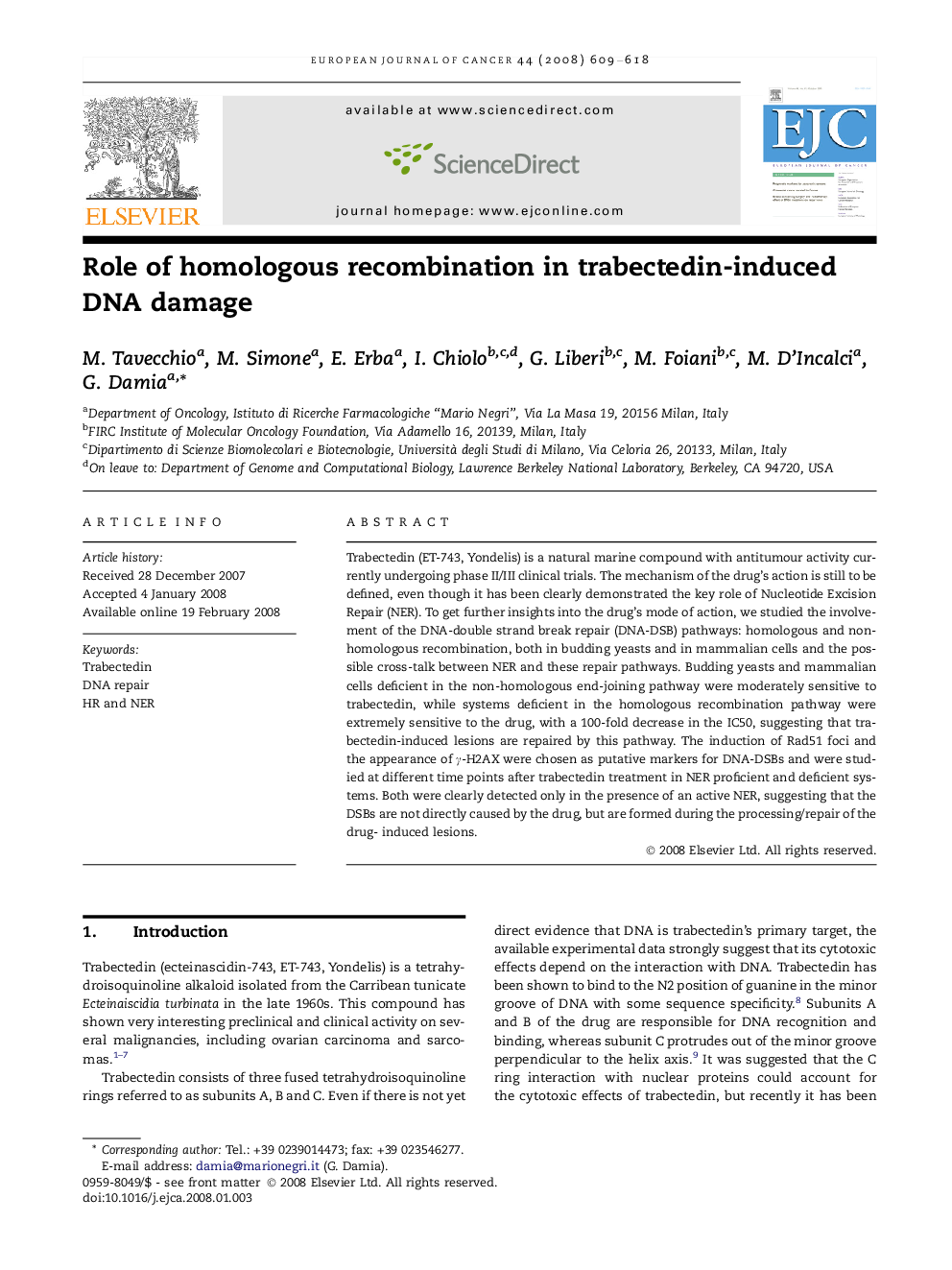| کد مقاله | کد نشریه | سال انتشار | مقاله انگلیسی | نسخه تمام متن |
|---|---|---|---|---|
| 2125929 | 1547253 | 2008 | 10 صفحه PDF | دانلود رایگان |

Trabectedin (ET-743, Yondelis) is a natural marine compound with antitumour activity currently undergoing phase II/III clinical trials. The mechanism of the drug’s action is still to be defined, even though it has been clearly demonstrated the key role of Nucleotide Excision Repair (NER). To get further insights into the drug’s mode of action, we studied the involvement of the DNA-double strand break repair (DNA-DSB) pathways: homologous and non-homologous recombination, both in budding yeasts and in mammalian cells and the possible cross-talk between NER and these repair pathways. Budding yeasts and mammalian cells deficient in the non-homologous end-joining pathway were moderately sensitive to trabectedin, while systems deficient in the homologous recombination pathway were extremely sensitive to the drug, with a 100-fold decrease in the IC50, suggesting that trabectedin-induced lesions are repaired by this pathway. The induction of Rad51 foci and the appearance of γ-H2AX were chosen as putative markers for DNA-DSBs and were studied at different time points after trabectedin treatment in NER proficient and deficient systems. Both were clearly detected only in the presence of an active NER, suggesting that the DSBs are not directly caused by the drug, but are formed during the processing/repair of the drug- induced lesions.
Journal: European Journal of Cancer - Volume 44, Issue 4, March 2008, Pages 609–618